Abstract
Six patients are described who experienced difficulty in driving a motor car. Four had illusions that the car was turning, which occurred particularly on open, featureless roads or the brows of hills and caused the driver to stop. All patients had peripheral or central neurootological abnormalities, but the only finding consistent with the directionality of the symptoms was an unpleasantly increased sense of circularvection during optokinetic stimulation in the direction of the illusion. These problems occur because of a false sense of orientation arising either from inappropriate signals from disordered vestibular canal and otolith organs or from a disordered central interpretation of vestibular information, and become manifest in the absence of adequate visual stabilisation. The other two patients with lateralised vestibular disease made inappropriate steering adjustments in the direction of the imbalance of vestibular tone.
Full text
PDF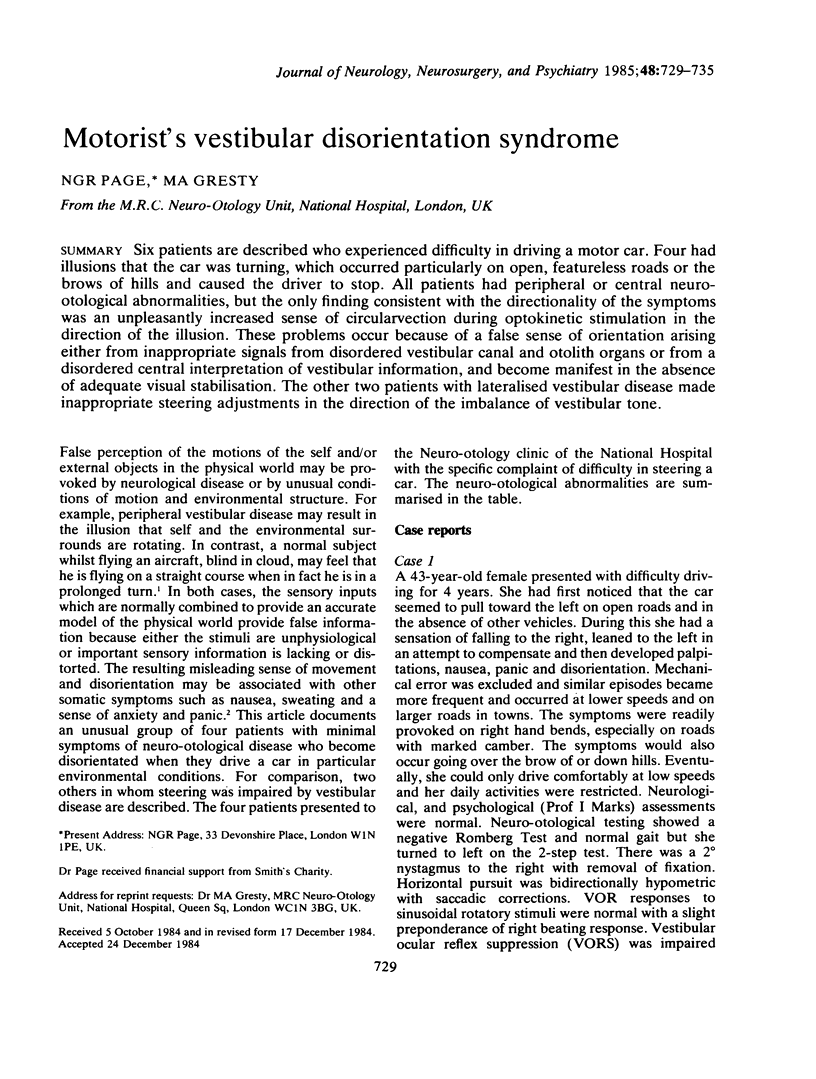
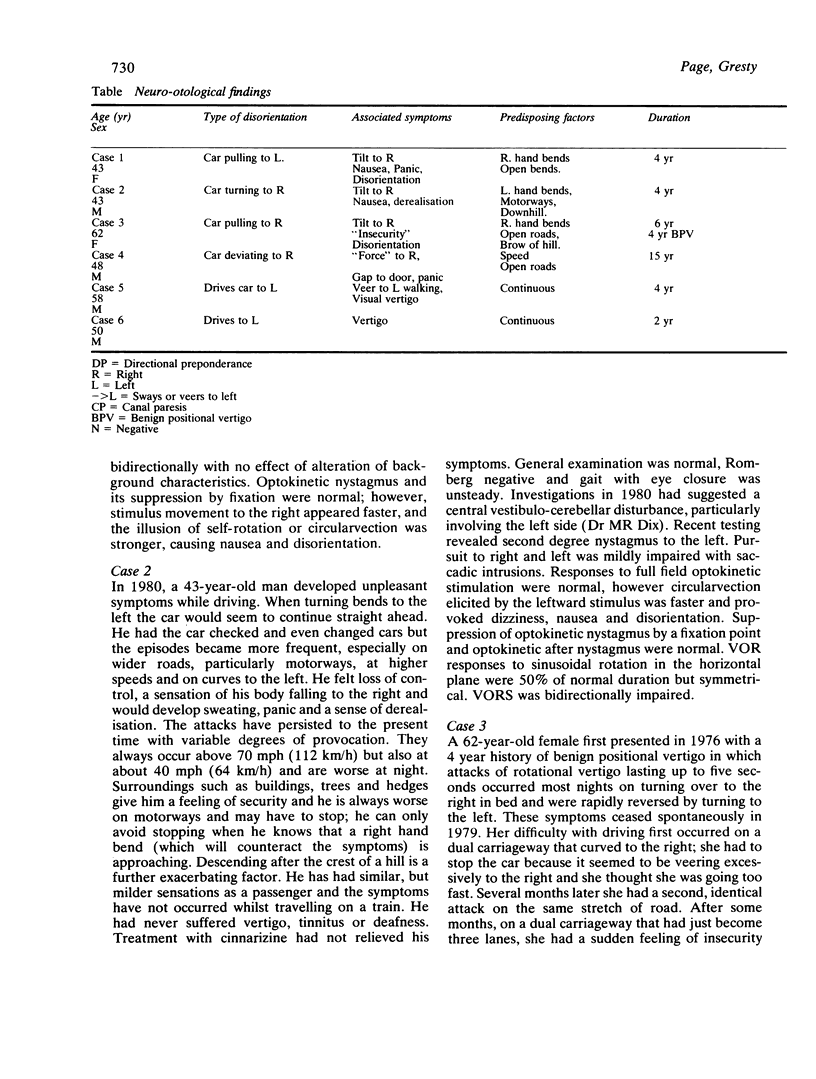
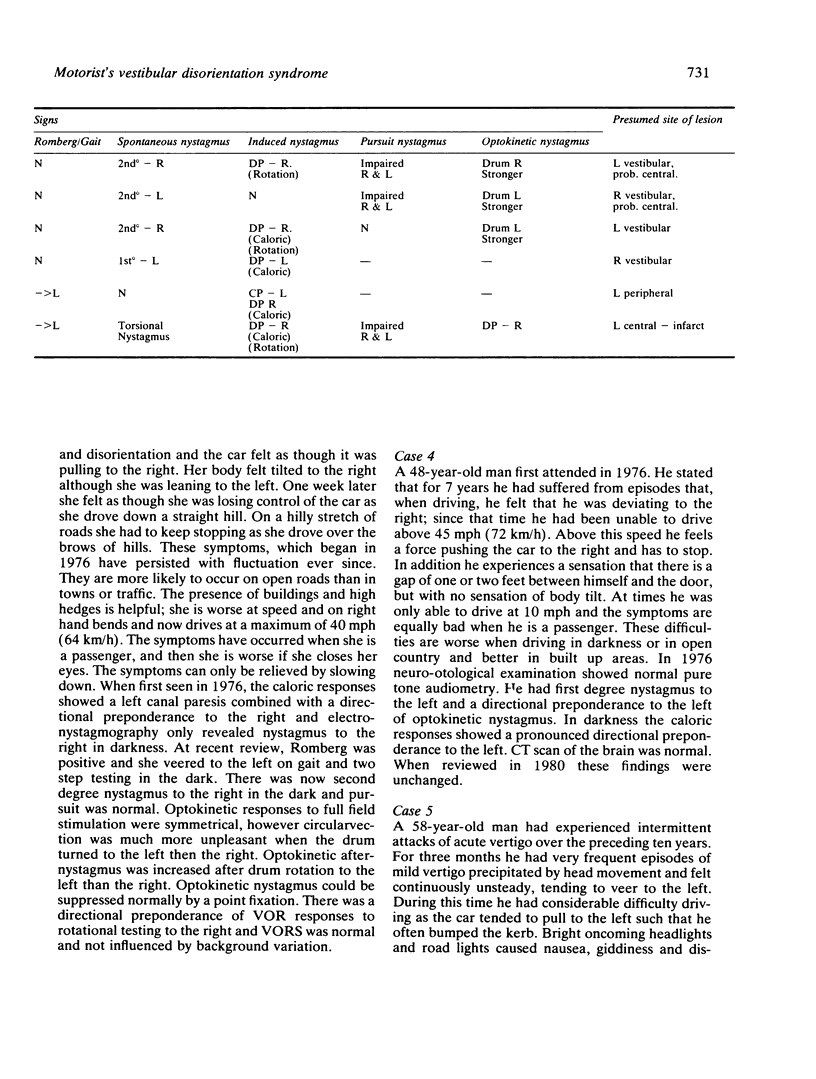
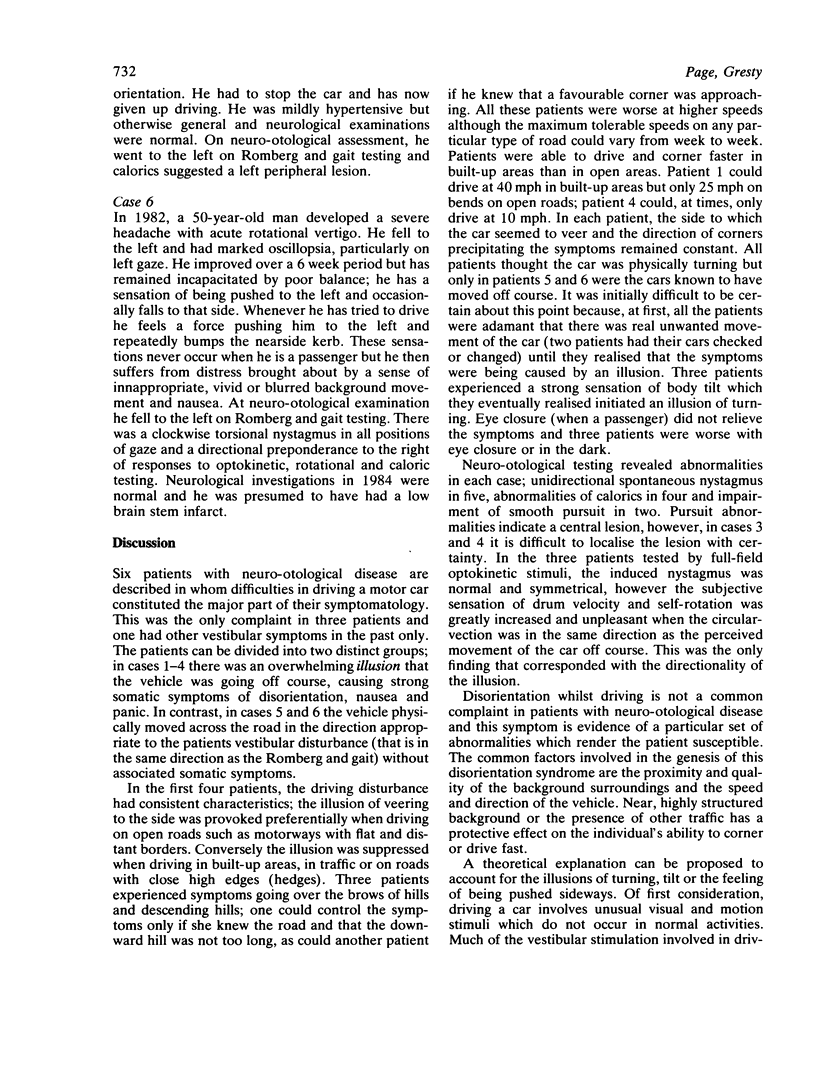
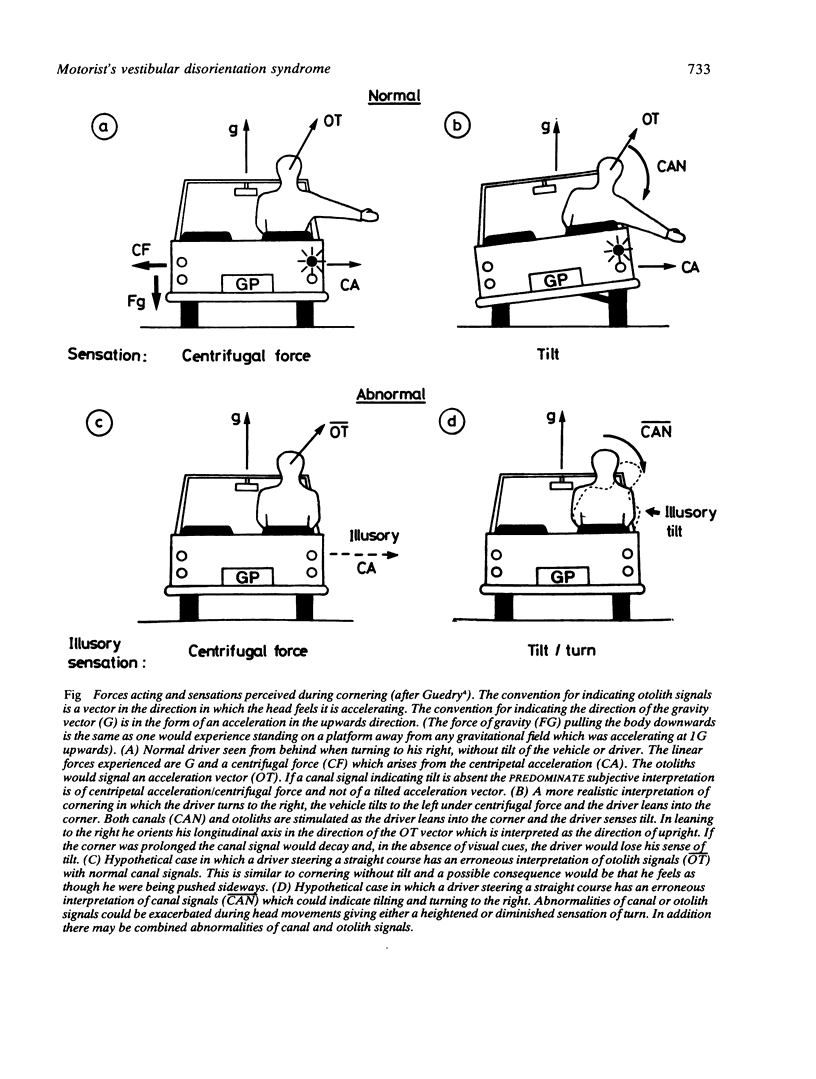
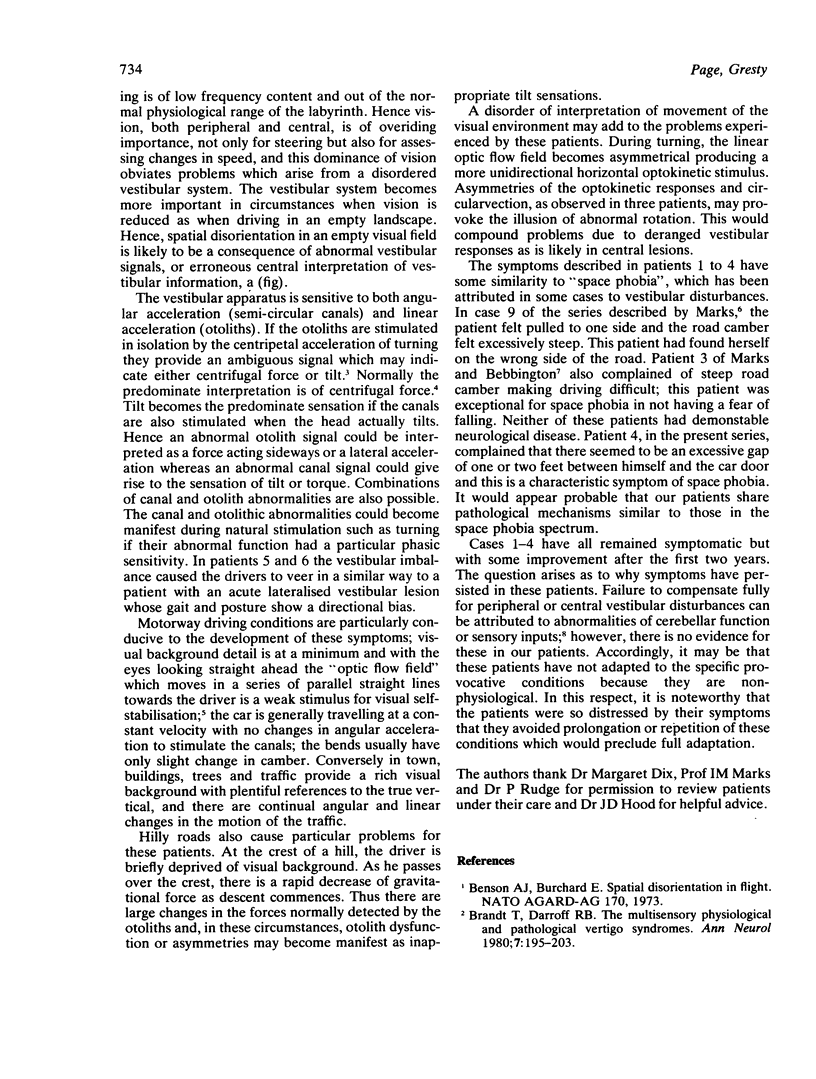
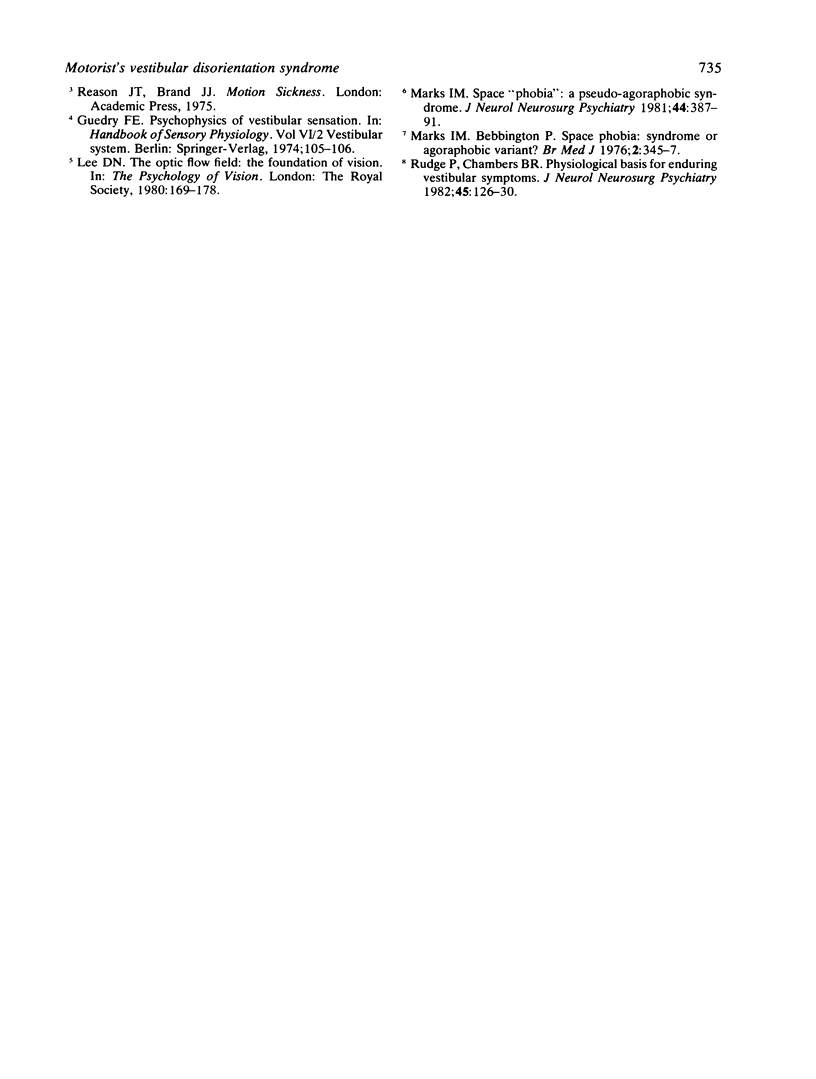
Selected References
These references are in PubMed. This may not be the complete list of references from this article.
- Brandt T., Daroff R. B. The multisensory physiological and pathological vertigo syndromes. Ann Neurol. 1980 Mar;7(3):195–203. doi: 10.1002/ana.410070302. [DOI] [PubMed] [Google Scholar]
- Marks I., Bebbington P. Space phobia: syndrome or agoraphobic variant? Br Med J. 1976 Aug 7;2(6031):345–347. doi: 10.1136/bmj.2.6031.345. [DOI] [PMC free article] [PubMed] [Google Scholar]
- Marks I. Space "phobia": a pseudo-agoraphobic syndrome. J Neurol Neurosurg Psychiatry. 1981 May;44(5):387–391. doi: 10.1136/jnnp.44.5.387. [DOI] [PMC free article] [PubMed] [Google Scholar]
- Rudge R., Chambers B. R. Physiological basis for enduring vestibular symptoms. J Neurol Neurosurg Psychiatry. 1982 Feb;45(2):126–130. doi: 10.1136/jnnp.45.2.126. [DOI] [PMC free article] [PubMed] [Google Scholar]


